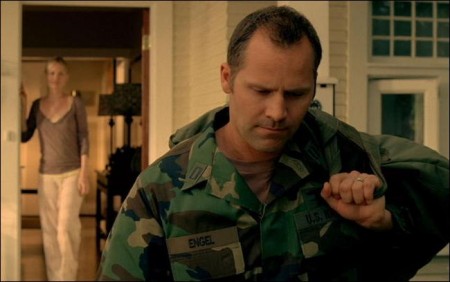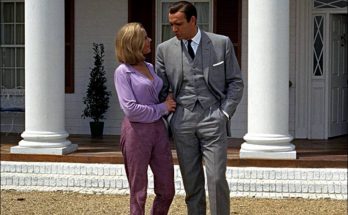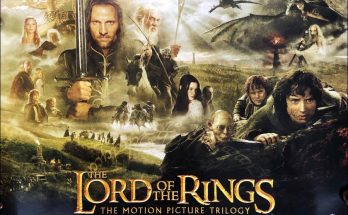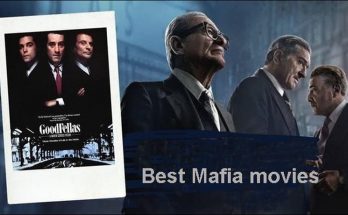Act of Valor: The realism in the authenticity. Having the U.S. Navy SEALs serving as advisors was an indispensable resource for the filmmakers as they continued to develop the script for Act of Valor. “At the time, the U.S. Navy SEALs weren’t in the public eye the way they are today,” says Leitman.
“We were trying to figure out what the real threats in the world were. We learned some things about Northern Mexico and Chechnya. We learned how broad-based the threat to the U.S. actually is. There’s no war at home, so we don’t have a really strong sense that there are men and women out there protecting us.”
In-depth consulting with military sources and government agencies revealed a wealth of possible scenarios. “We decided to set up a story in which the homeland was threatened,” says McCoy. “So we looked at current threats across the board. What are the areas of operation? What kinds of missions are the guys doing right now? What assets and equipment do they work with?”
When it came to playing their roles, the U.S. Navy SEALs in the film were given free rein to decide what was real and authentic. “For example, the way they speak in the movie is the way they speak in real life,” says Waugh. “They throw acronyms around and they have a certain vernacular. We tried to keep it authentic because we want the audience to experience what it’s like to be in their world. When we gave dialogue to them, they would often tell us, no, I’d say it like this. And what they would say was much better than what we had written.”
Just as important were the ways in which the U.S. Navy SEALs communicated while not speaking. When they are in the field, or “down range,” communication is necessarily silent. “Their subtle body language and their hand movements say so much,” says Waugh. “It adds the tension to scenes, because now the audience is truly just listening the way they listen. You may hear a tree branch breaking or the sound of an owl or a spider monkey in a tree making a growling noise-or was that the bad guy? We tried to capture those moments before all hell breaks loose.”
According to Special Warfare Operator First Class Ray, the directors were always aware of capturing the U.S. Navy SEALs at their best. “Scotty and Mouse were really flexible on adjusting to how we moved and vice versa,” he notes. “We actually had to slow down for some scenes. It’s in our muscle memory to do things in a certain way at a certain speed, but they knew how it would work best on camera and we had to trust them.”
Even the film’s extraordinary action sequences were designed by the U.S. Navy SEALs. “All the operational planning was done by them,” says McCoy. “There was no dude sitting in Hollywood in his underwear at three in the morning writing the ops plan for how to hit a target. This is the way it would really go down.”
In order to execute those scenes, the filmmakers would outline a scenario for the U.S. Navy SEALs and ask them to plan the operation exactly as they would in the real world. “For instance, you’ve got a bad guy on a 180-foot boat in the Caribbean and he’s got two counter-piracy boats,” says McCoy. “They would get their white boards out and design the entire ops plan. We would develop the camera plan around that. Then we would become one platoon and go hit the target.”
The film crew took their cues from the impeccable teamwork their highly trained cast members demonstrated. “The U.S. Navy SEALs work together seamlessly without any ego in the middle of it,” says McCoy. “There’s really no room in a platoon for that. It has helped us to approach film making differently.”
In order to capture the action as realistically as possible, the co-directors employed up to 12 cameras at a time and often ran two first units, with each of them independently directing their own crew as they filmed different aspects of a single scene. “Scott might have one unit shooting inside a location,” says Jacob Rosenberg, a partner in Bandito Brothers and Act of Valor’s post-production supervisor.
“Mouse would have the other unit shooting outside. He could jump on a motorcycle and ratchet strap a cameraman to his back, then blow through a set with the cameraman shooting and doing pivot moves, which allowed us to capture super-creative stuff. Scotty would be very specific about the story points, things that needed to emotionally carry the movie. He was always on top of that.”
As co-directors, the pair had doubled up in the same way on earlier projects and knew they could depend on each to do what each does best. “That’s the greatest part about directing with somebody that you’ve known your whole life,” says Waugh. “I know exactly what he’s getting on his set. Mouse and I were able to document what was happening in one evolution. We wanted this thing to be a thrill ride, without stopping and cutting, so we came up with a full battle plan to tell the story in one take.”
“We could run a scene like a play,” says McCoy. “We would start at the beginning and go straight through to the end. It was a really fluid and dynamic way to shoot action, and we could only do it because the U.S. Navy SEALS were so good. We didn’t need to block every scene with them. They just did it.”
The Navy provided the filmmakers with access to their ranges, vessels, aircraft and other assets-but with several caveats. None of the filming was to interfere with previously established Navy training schedules and all would take place at no cost to the Navy. The coordination and logistics required to film around special operations aircraft is so time-intensive, says Captain Smith, it’s unlikely to ever happen again.
“In traditional war movies, you’ll have a military advisor,” says Rosenberg. “Occasionally, the military will provide a location or some assets to help lend authenticity. When we crafted the story, we wanted it to express the scope and reach of what the U.S. Navy SEALs are able to do. They do the most challenging and difficult things on sea, air and land. They have tons of tools and hardware, and the Navy allowed us to shoot all of these assets, some of which the public has never seen before.”
Act of Valor marks the first time that the Navy has made an SSGN submarine available for a film shoot. One of the most valuable of the military’s assets, there are only four of the nuclear subs in existence and they are always in theater. “Getting access was extremely complicated,” says Waugh. “To shoot that scene, we were given GPS coordinates in the middle of the ocean. We had to coordinate our crew to meet the sub and shoot the entire sequence within a very limited window.”
The submarines spend the vast majority of their time submerged. “The last thing those guys ever want to do is breach the surface,” says McCoy. “It gives away their position. The Navy told us they would breach for less than 45 minutes and that’s all we got. We had to run it like a real mission out in the middle of the ocean on Zodiacs. I was in full camouflage holding a camera with the guys on the boats. Scottie was in the helicopter above. Sure enough here comes that thing on time and on target. That sub comes out of the water, and we ran those boats right up on the back of that, popped off and ran in one take.”
Working that way opened Waugh’s eyes to new possibilities in the ways films can be made. “Hollywood has been making films the same way for the last 100 years,” he says. “This inspired us to take an unconventional approach. We had to get things done efficiently and authentically without an arsenal of gear and technology. We had to really push the envelope, and do things that haven’t been done.”
Working with U.S. Navy SEALs also allowed them to discard some of the constraints of traditional filmmaking, says McCoy. “It was never a lead actor in a part of the scene, and the stunt double in the rest. Our lead actors are right in the middle of the scene. They’re on gun, on dialogue in the middle of the action at full throttle.”
Director of photography Shane Hurlbut came to the set soon after completing the blockbuster feature Terminator Salvation and made an immediate connection with the directors when he suggested they use the Canon 5D, a small, lightweight digital camera that was then new to the market. “I immediately respected Shane,” says Waugh. “He’s a passionate filmmaker who continually pushes the envelope with technology and cameras, which is exactly the way Mouse and I work. We instantly became great friends. Mouse and I both operate cameras as well, but it’s something else to see a great director of photography. He’s a master of the craft and a magician with light.
“Shane had some great ideas about how to use the 5D, which Mouse and I were already thinking about working into our film,” says Waugh. “Once we spoke with him, we agreed there was no better better way to capture the U.S. Navy SEALs than with somebody like Shane. Shane’s all about breaking with the norm to transcend into something new and fresh.”
McCoy and Waugh knew they needed a camera platform that could change their physical approach to action filmmaking. After testing it at Bandito Brothers, they initially thought they would shoot the more intimate scenes in 35 millimeter and bring in the 5D for the action sequences. As the film progressed, they were impressed by the complexity and richness of the images produced by the camera, as well as its versatility.
“It gave us the ability to have all the cameras in the right places on the budget that we were handed,” says Hurlbut. “It could morph as big or as small as we wanted. We could put it into a crash housing and drive over it. We could mount one in a tree. I had a guy in the water in the underwater housing; I had one on a techno crane flying over on the side.
“It was less about creating a particular look than it was about letting the audience sit back in their chairs, grab hold of those armrests and go, whoa,” says the cinematographer. “When our guys are jumping out of an airplane at 18,000 feet, you will feel like you’ve just jumped out of it too.”
Hurlbut refers to the camera setups he improvised for the film as his cinematic guns. “We built a variety of different cameras from the 5D, each with a different application. What we called the stripper is very small. We were able to do tons of photography with just that stripper, mostly intimate scenes with the U.S. Navy SEALs in the back of the pickups or storming the yachts.”
One of his most effective and dramatic innovations is a helmet cam that places the audience in the boots of a U.S. Navy SEAL mid-mission. “It gave us the ability to be one with the men, looking through their eyes,” he says. “Helmet cams have been around for a while, but with a camera that weighs 25 pounds or more, the utility was limited. The 5D was small enough that we could use it to provide a truly immersive experience.”
McCoy and Waugh can trace a pivotal element in Act of Valor back to the seven-minute swift-boat documentary they made. “It was the first time the Navy ever allowed filmmakers in a live fire environment,” says Waugh. “Live fire in film hasn’t been done since the 1920s. After seeing what real ammo and tracer bullets look like in the earlier film, we said, we’ve got to shoot this live fire.”
Using live fire, for the U.S. Navy SEALs, is a regular day at the office, according to Denver. “For us, it’s very comfortable,” he explains. “We train to that standard because you want to train like you fight. I remember a scene we were filming with the boats that come in to pull us out of a hot target. And we did that swim. It comes down to trust. We trust the boat guys that are our brothers to shoot in such a way that we’re taken care of. And they trust us to stay out of their way and let them do their job. It comes together in this amazing coordinated effort.”
Despite their background as stuntmen, Waugh and McCoy discovered live fire was unlike anything they’d done before. “It adds an intensity and a level of respect for what you’re doing like nothing else in the world,” says McCoy. “We had 3,000 rounds a minute coming out of one mini gun. It adds a charge and energy to the film. Everybody’s on point. If you get it wrong, people die.”
But the visuals justified the risk, says Waugh. “It’s a different flame thrown out of the barrel. It actually throws out farther. And I think everyone handled their weapons differently, knowing that they were holding something that could kill people. It’s not like any Hollywood film you’ve seen.”
The choice took their director of photography by surprise. “When they told me, I said ‘what do you mean live fire?'” recalls Hurlbut. “‘Well, that’s where they shoot live ammo.’ ‘So, where am I going to be?’ ‘You’re going to be right there. We’ll give you a flak jacket and you’re going to be fine.’ And I’m like, ‘what about ricochets?'”
Hurlbut soon saw for himself the realistic quality live fire gave to the battle sequences that could not have been matched by blanks. “There were some serendipitous moments during filming. A gun might jam so someone had to reload. You can actually see the bullets fly. It is really visceral. It was nice knowing U.S. Navy SEALs rarely miss.”
Waugh, an experienced editor in his own right, cut the film in tandem with veteran editor Michael Tronick, whose previous work includes The Green Hornet and Iron Man. “Michael is old school,” says Waugh. “And I said, meet the new school. He and I went at it all the time, which kept each us both in check in the edit bay. I would really always push the envelope with new-style editing, and he made sure we kept the story going, so it was a wonderful balance.”
Tronick was taken aback at the freshness of the film. “It has something I have never seen before in terms of content, action and performances. I’ve cut action movies before with stars from Steve Segal to Arnold Schwarzenegger, Eddie Murphy and Brad Pitt. The action here is more intense and more intimate because of the use of the 5Ds with their flexibility and ability to get close. It is unexpected and very, very well designed,” he adds. “There’s an immediacy to it that isn’t enhanced artificially. The choreography of the action sequences is exquisite. When I first saw the shot of the submarine surfacing and the guys parachuting down, it took my breath away.”
That Act of Valor was a once-in-a-lifetime experience is something everyone involved with the film readily acknowledges. “I don’t think there’s been a film like this before,” says McCoy. “We feel it’s an entirely new genre of film, the authentic action film. People in Hollywood thought it was just crazy to do this. But when they started to see the footage, they were completely blown away. Even inside the U.S. Navy SEAL community they’re saying, ‘wow, this is pretty high speed, man.’ And to those people who were worried about whether the U.S. Navy EALs could act, we say, check it out. It’s on the screen.”
Looking back over the four years it has taken to bring the movie to theaters, both directors feel humbled and honored. “We were invited into a really special community,” says McCoy. “We were allowed to immerse ourselves in it. We discovered an unbelievable level of brotherhood and sacrifice.”
According to Waugh, making this film has been the biggest thrill of his life. “It has given me a deeper, more profound appreciation for the men and women who continually risk their lives for our freedom. This movie is apolitical. All it is has to do with is supporting our women and men down range.”
Act of Valor also has special resonance for the military men involved. “When I saw the film for the first time, I got chills,” says Ajay. “It’s a gripping and poignant and well-told story about real heroism. A lot of true stories have been woven into this fictitious tale. We all hope it brings respect and honor to our community.”
Rorke adds: “I worry that the public forgets that there are still guys in harm’s way. We never forget. We’ve been living for a decade and beyond of sustained combat against our nation’s enemies. And the fight continues. Our brothers are there right now. Guys from this picture are overseas in the fight right now.
The honor and loyalty and teamwork and commitment and love we have for each other, for our country and our families come through on the screen. If people can recognize that, then I think they will have gotten the point of Act of Valor. It’s not about the gun fighting. That stuff will be exciting, but there’s a higher purpose. If we can share that, I think we will have achieved something special.”
Related Link: View the Full Production Notes for Act of Valor
Views: 105




